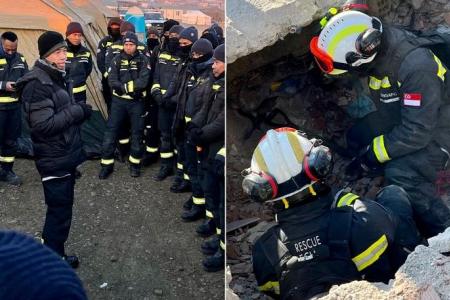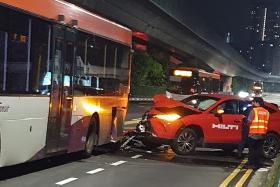'We see the resilience... and for that we salute them': SCDF team in Turkey
As soon as they arrived in the earthquake-stricken city of Kahramanmaras in southern Turkey on Feb 8, an advance team of 20 Singapore Civil Defence Force (SCDF) officers quickly swung into action.
Driven by worry for survivors who were still trapped under the rubble in the dead of winter and a rush of adrenaline, SCDF’s Operation Lionheart contingent worked round the clock for the first 72 hours, braving temperatures that fell to minus 6 deg C at night.
During this time, they were able to work with their local and international counterparts to rescue a boy and a man from buildings that had collapsed after a magnitude-7.8 earthquake hit south-eastern Turkey and the north-western regions of neighbouring Syria in the early hours of Feb 6.
The advance SCDF team also retrieved three bodies from the rubble before another 48 officers joined them in Turkey on Feb 10, bringing with them additional search-and-rescue equipment, medical supplies, and communications and logistics support equipment.
Speaking to the media via video call from Operation Lionheart’s base of operations in Kahramanmaras, the contingent’s commander, Colonel Chew Keng Tok, said morale remains high despite the fatigue.
“I must say that we are tired, definitely... We are now gradually going to a rotation. Teams are being split up so that they have adequate rest before they are deployed,” he told reporters.
There are also two psychologists and two medical doctors on hand to watch over the physical and mental well-being of the contingent, Col Chew said.
The locals in Turkey have also been warm and keen to offer help despite the devastation.
“While they are in grief... when we approach them, we often receive a lot of help from them. Very simple gestures like offering us warm drinks and food, knowing that we are cold,” he added.
“We see the resilience in them, and for that we salute them.”
So far, more than 30,000 people in Turkey and Syria have died in the wake of the Feb 6 earthquake, which was followed by a powerful magnitude-7.7 aftershock hours later.
On Sunday, United Nations emergency relief coordinator Martin Griffiths warned that the death toll could more than double. Turkey said about 80,000 people were in hospital, with more than one million in temporary shelters.
Kahramanmaras, which is close to the epicentre of the earthquake, is one of the hardest-hit areas. Before the earthquake, the city was home to about 500,000 people.
There are 26 international rescue teams, including Singapore’s Operation Lionheart, working there, said Col Chew.
He said the urban search-and-rescue methods used by the Singapore contingent are the same as those employed in previous overseas missions, and the training done back home has been sufficient for the team to provide the assistance needed.
This is the 20th Operation Lionheart overseas deployment since 1990, and one of the contingent’s farthest missions.
The main challenge in Turkey has been the cold weather, which has also affected the charging of batteries and operational equipment needed for search and rescue.
Another challenge is understanding the local culture and being sensitive to the dos and don’ts in the areas that the contingent is operating in, Col Chew added.
He said Operation Lionheart will continue its work in Kahramanmaras.
Its base of operations there has been expanded to accommodate the full 68-member contingent, which is expected to be self-sufficient for up to 14 days.
Over the last 24 hours, two Singapore teams – each comprising eight officers from SCDF’s elite Disaster Assistance and Rescue Team, two search specialists with their search dogs, one paramedic and two support officers – were sent to two different sectors in Kahramanmaras city centre to identify potential rescue sites.
Life detection equipment was used to locate possible casualties, and a total of seven sites were assessed before both teams returned to base.
“A lot of work has been done in the city centre and with the coordination efforts by the local authority here, together with the UN, we are slowly seeing our teams being deployed outside the city centre,” said Col Chew.
He added that the Singapore contingent will stay in Turkey to help as long as the local authorities and UN coordinator require them.
Life-saving tools
SCDF’s Operation Lionheart contingent has been using a slew of search-and-rescue equipment to find and save people trapped underneath rubble in earthquake-stricken Turkey. This is how the tools are used in a typical rescue operation.
Detecting signs of life
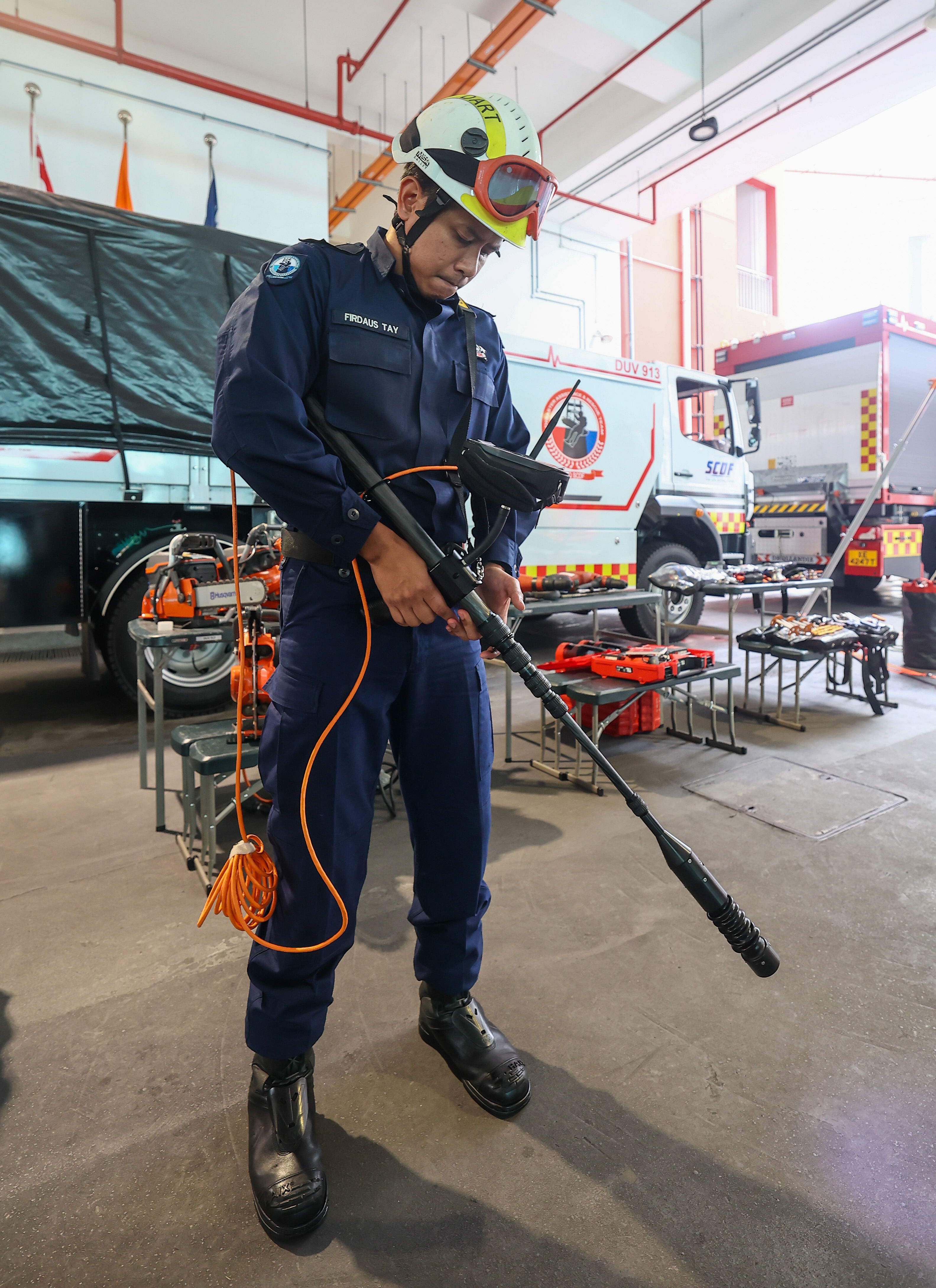
Initial assessment
- Rescuers use internationally recognised markings to let one another know whether an area has been searched, and whether there are likely to be any survivors.
- Rescue dogs and interviews with locals’ help to narrow the search area.
Victim detection and location device
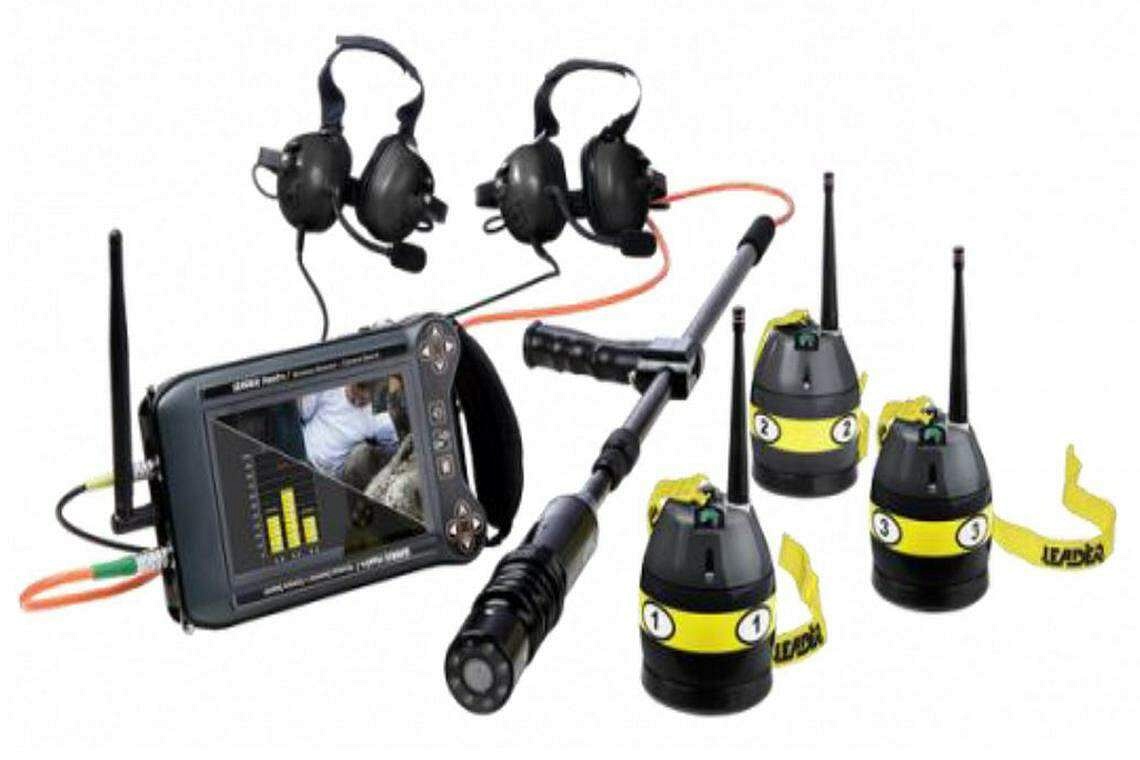
- This tool includes three wireless seismic sensors that can detect movement underneath rubble and triangulate the location of a trapped person.
- A camera attached to a 4m-long telescopic pole helps pinpoint the location.
Fibre-optic scope

- This 3.5m-long video scope can be inserted into tight spaces to locate casualties and provide visuals.
- Rainproof, dustproof and shockproof, it is also flexible enough to be used along winding and rough paths.
- The articulating tip has an LED light that provides illumination.
Warning alarm stability protection device
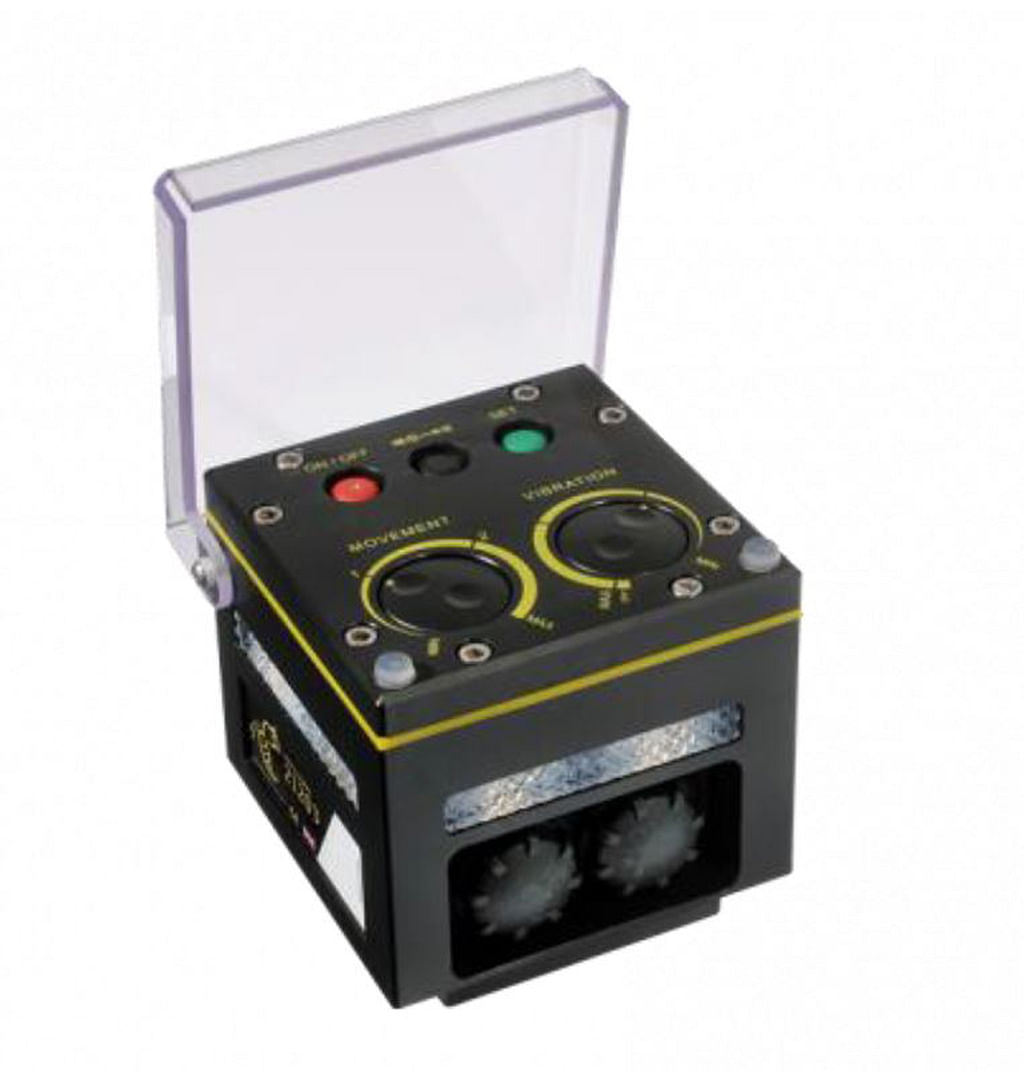
- This device detects movements and vibrations to warn rescuers early if there is an aftershock, or if the building they are in is about to collapse.
Cutting and breaking
Once a trapped person is found, equipment is needed to create access points for rescuers to enter and extricate the victim from the rubble.
Power cutters and chainsaws
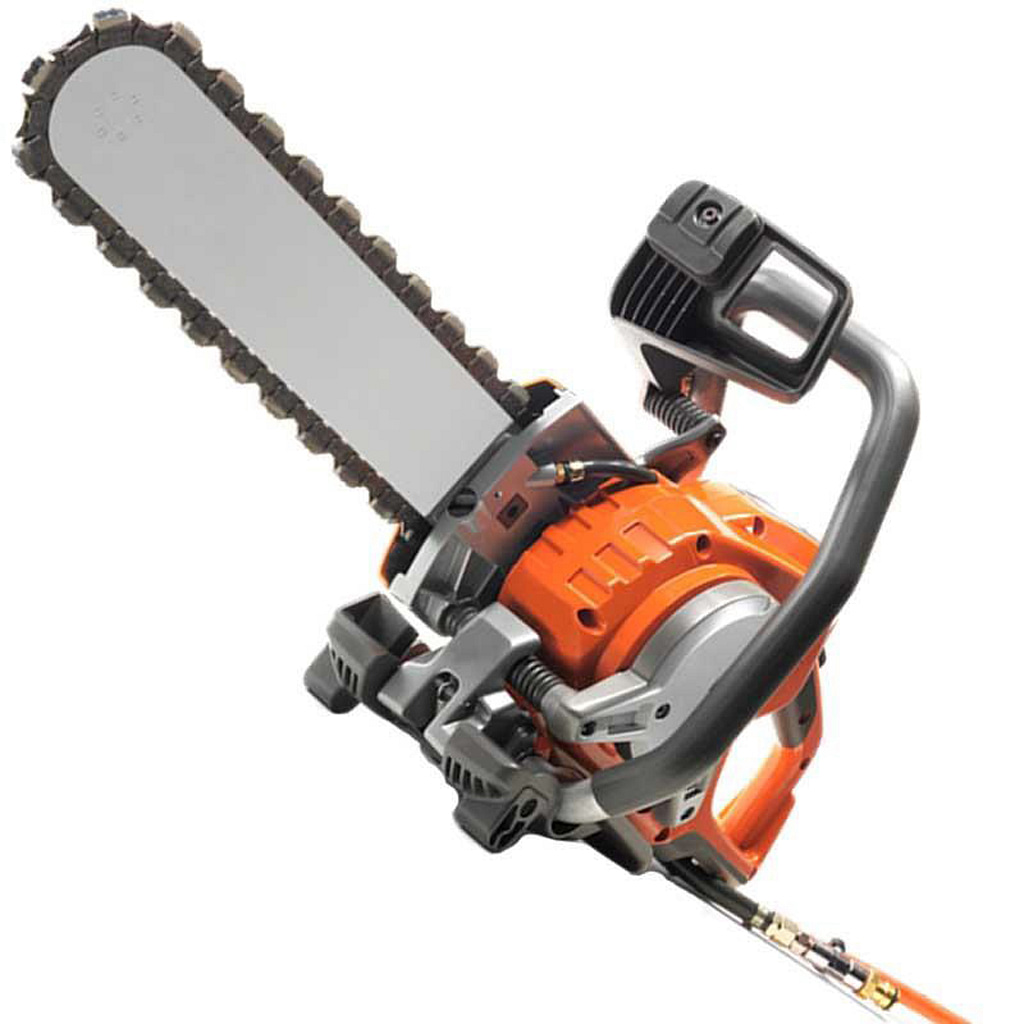
- Cutting equipment such as these are typically used to weaken concrete or penetrate it with what is called a “clean cut”.
Concrete demolition hammer
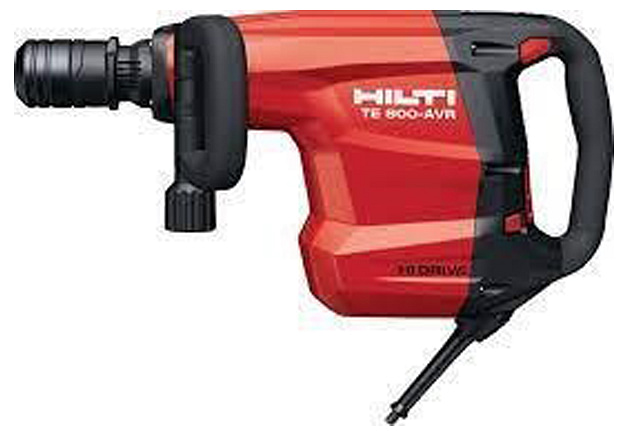
- Breaking equipment, such as this hammer, is used to chisel off concrete to create openings.
- This is called a “dirty breach” because of the debris that is created in the process.
Lifting

- Tripods are essential as they allow rescuers to suspend lifting equipment such as rope lines and pulleys above an edge, hole or other obstructions.
- The set-up allows rescuers to lift people out of the rubble using harnesses.
Get The New Paper on your phone with the free TNP app. Download from the Apple App Store or Google Play Store now

